Introduction: The Charm of Autumn Foliage in Kamakura
When autumn arrives in the ancient capital of Kamakura, the entire town is wrapped in a calm and nostalgic atmosphere.
Historic temples and shrines blend beautifully with mountains covered in vibrant foliage. The sight of tiled roofs and stone paths peeking through the trees creates a scene like a traditional Japanese painting.
While Kamakura is famous for its cherry blossoms in spring, autumn offers a quieter beauty — a season when you can truly feel the gentle flow of time.
Fallen leaves dancing in temple courtyards, moss-covered stone steps, and soft light filtering through the trees — simply strolling around brings a sense of peace to your heart.
This article introduces the best spots to enjoy autumn leaves in Kamakura, along with photography tips and recommended cafés.
Whether you’re visiting for the first time or returning once again, may this year’s autumn in Kamakura become a special memory for you.
Best Season, Weather, and Tips for Viewing Autumn Leaves
n Kamakura, the autumn leaves usually reach their peak from mid-November to early December.
Temples in the northern, more mountainous area—such as Kitakamakura—start turning colors a bit earlier, while those closer to the sea, like Hasedera and Kōtoku-in, stay beautiful until early December.
For 2025, the peak season is expected around November 25 to December 10, as the weather is predicted to remain mild.
The greater the temperature difference between day and night, the more vivid the leaves become—so aim for days when the air starts to turn crisp.
Tips
- Autumn weekends can be very crowded — visit on weekdays or early in the morning/evening for a more relaxed experience.
- Wear comfortable shoes — many temples have steep paths and stone steps.
- Bring a light jacket — temperatures drop quickly after sunset.
Recommended Autumn Foliage Spots in Kamakura and Kitakamakura
①Hasedera Temple
Known as the “Western Paradise of Kamakura,” this temple features a large garden with ponds and walking paths.
The reflection of red leaves on the water is breathtaking.
During the evening illumination (late November to early December), the temple becomes a dreamlike scene of glowing light and color.
📍 5 min walk from Enoden Hase Station
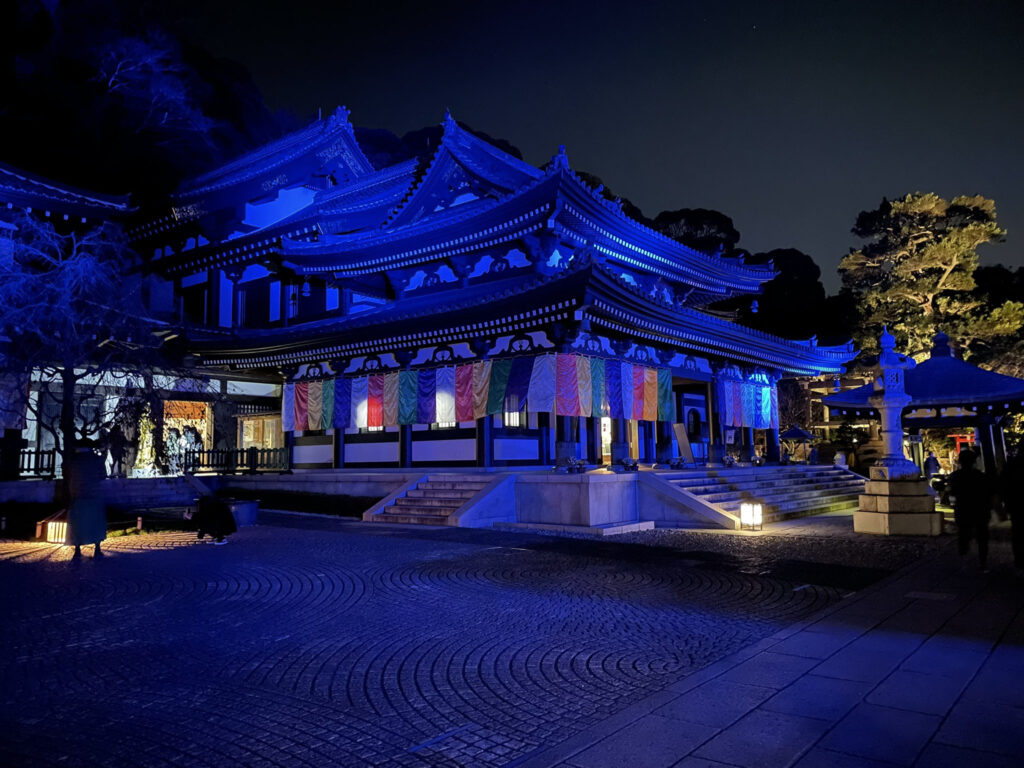
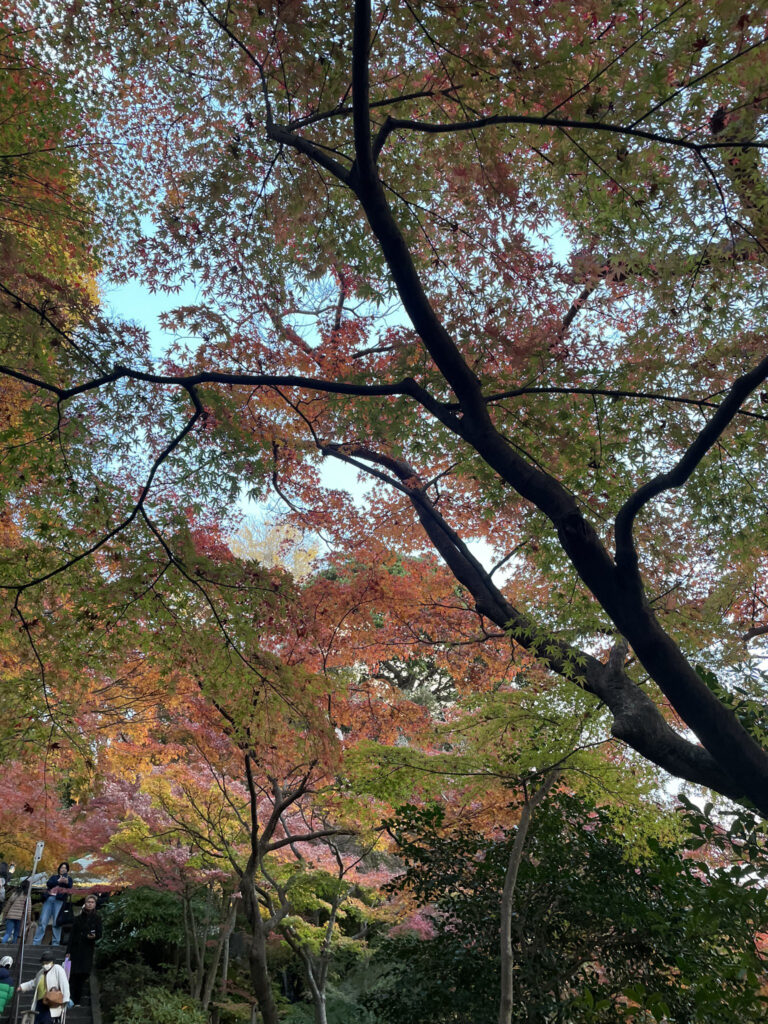
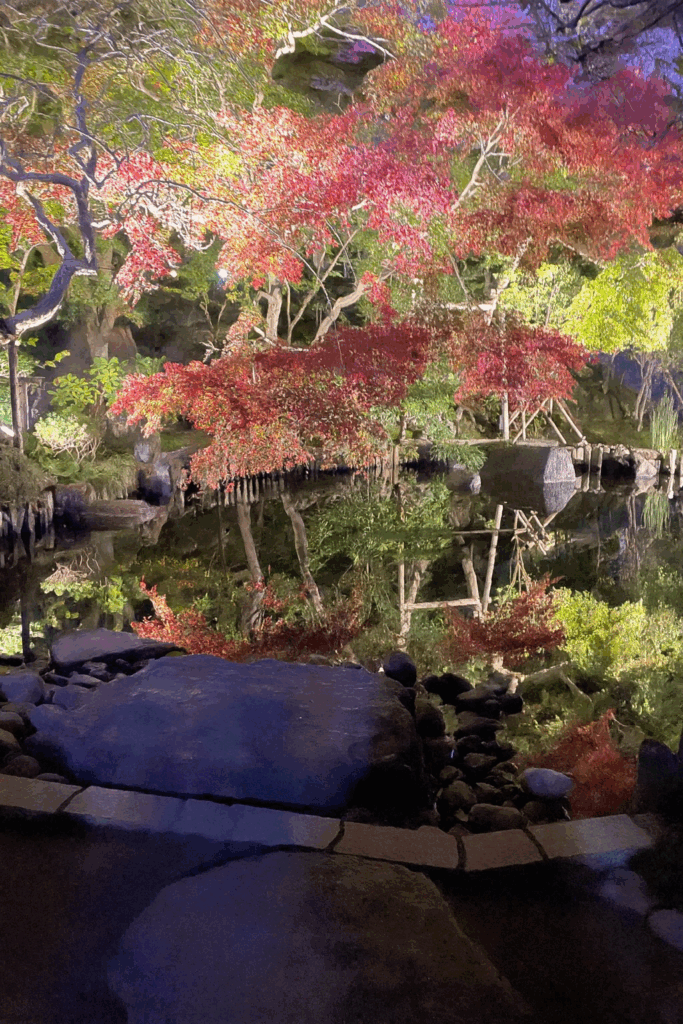
② Kōtoku-in (Great Buddha of Kamakura)
The maple trees behind the Great Buddha create a striking backdrop — a perfect shot of the Buddha framed by autumn colors.
The soft morning light provides the best photography conditions.
📍 7 min walk from Hase Station
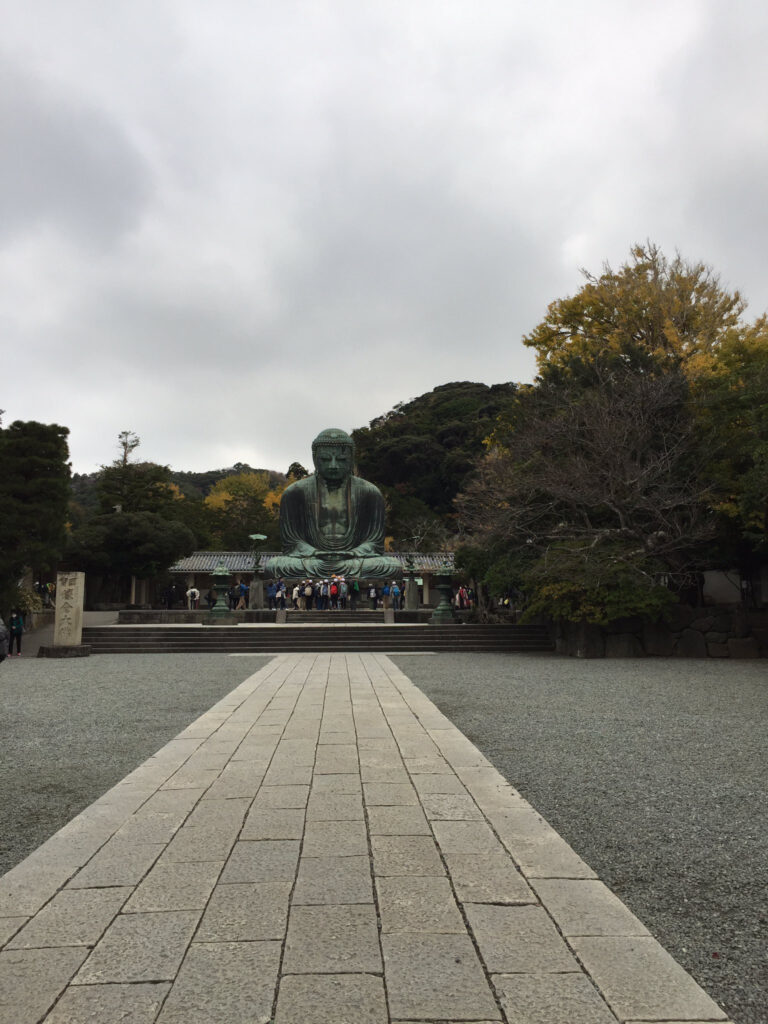
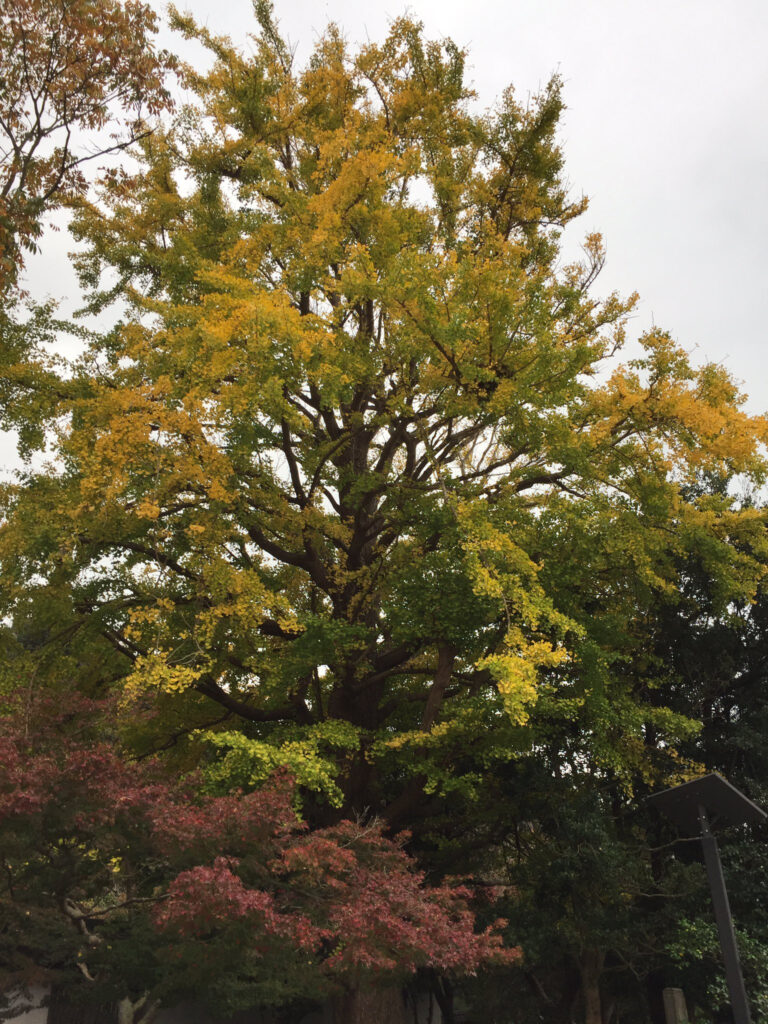
③ Engaku-ji Temple
Just beside Kita-Kamakura Station, Engaku-ji boasts grand temple grounds.
The maple-lined approach and maples in front of the main hall are stunning.
The tranquil atmosphere makes you feel at peace.
📍 1 min walk from Kita-Kamakura Station
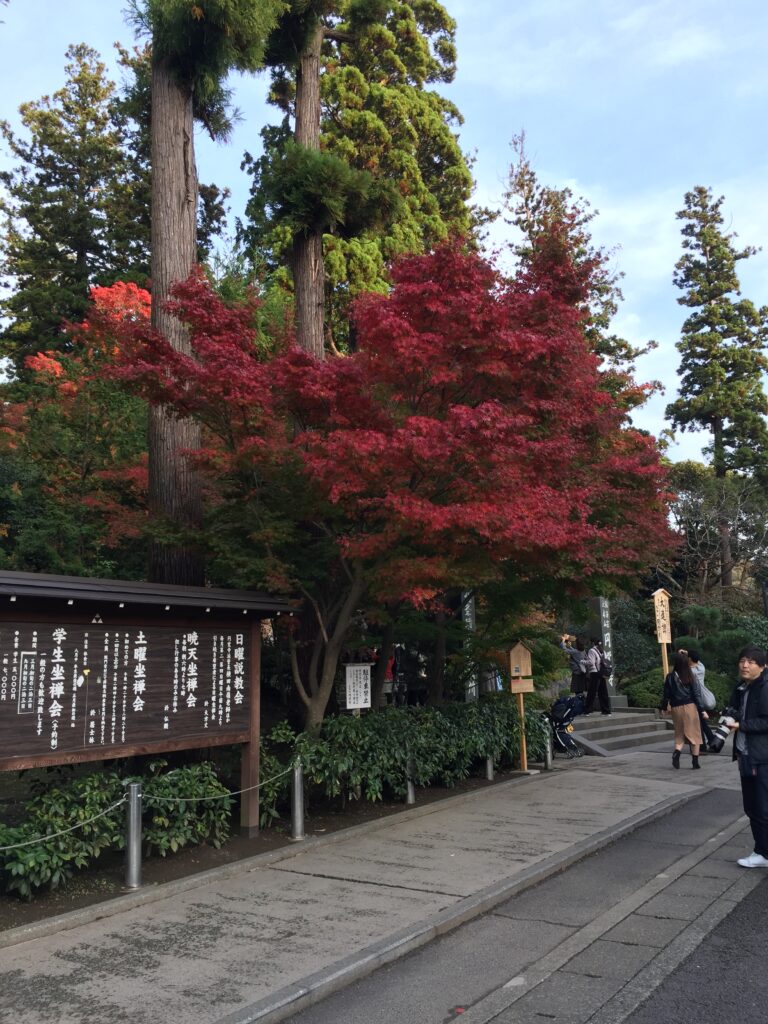
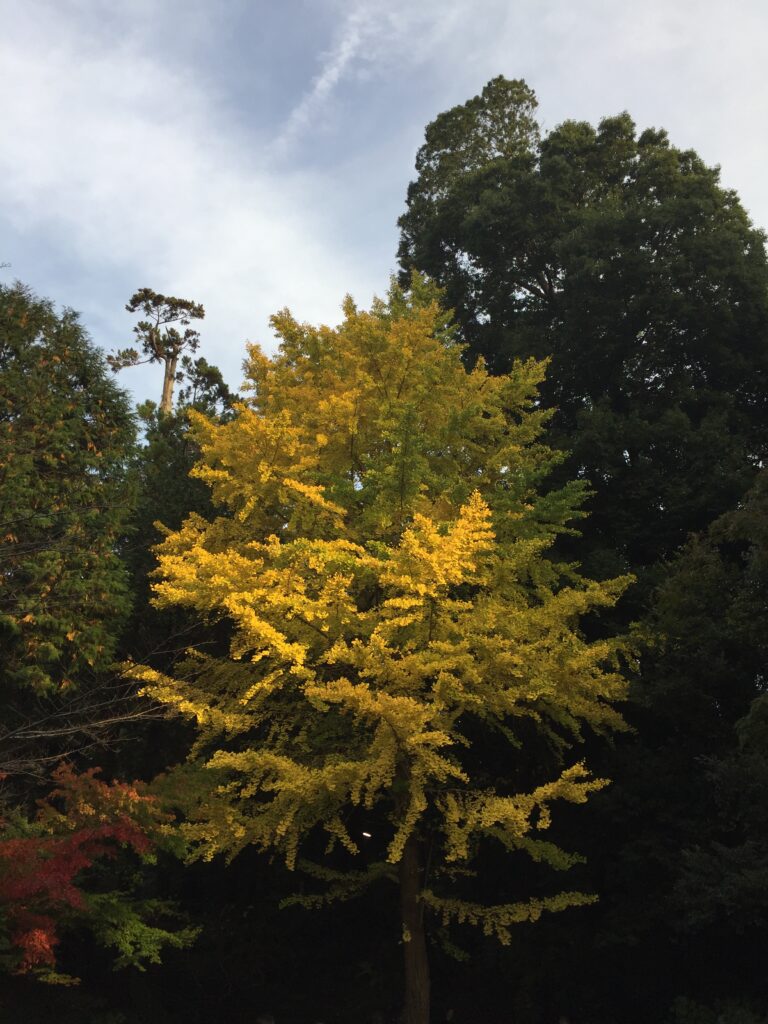
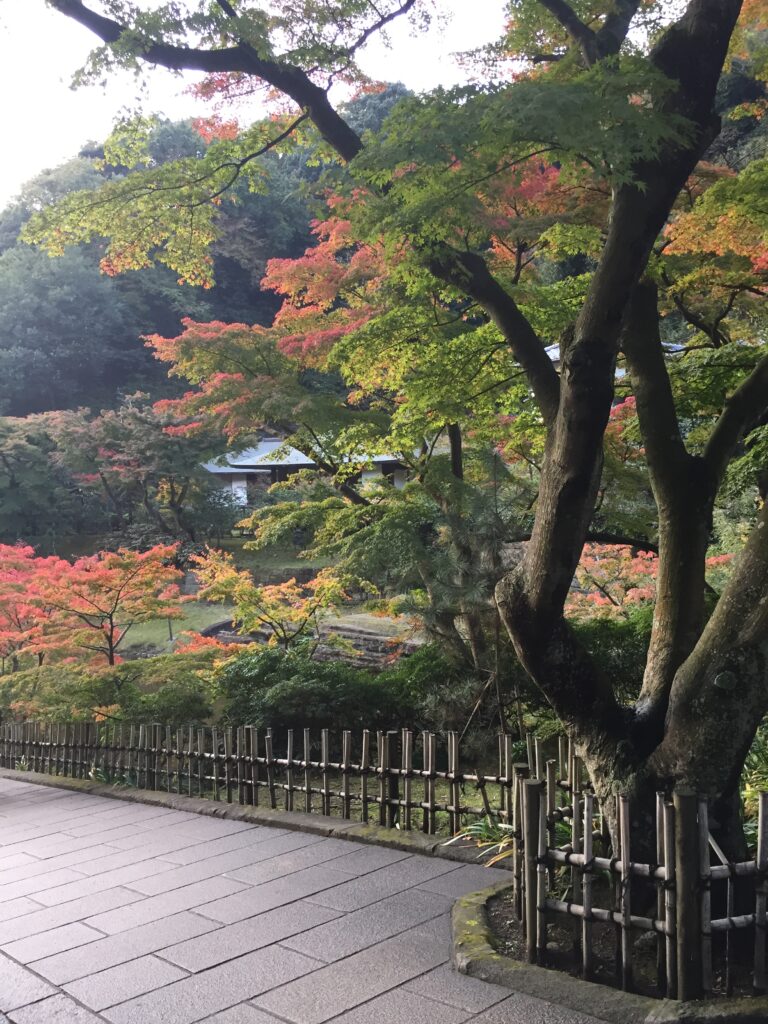
④ Meigetsu-in Temple
Famous for its “Window of Enlightenment”, where you can see brilliant red and gold leaves framed perfectly by a round window — like a living painting.
Go early in the morning to avoid crowds.
📍 10 min walk from Kita-Kamakura Station
⑤ Kakuen-ji Temple
Known as Kamakura’s temple of silence, this site offers special guided tours during the autumn foliage season.
Photography is restricted in some areas, so please follow temple rules respectfully.
📍 10 min walk from Kamakura-gū Bus Stop
⑥ Tsurugaoka Hachimangū Shrine
From the grand torii gate to the main hall and Genji Pond, the whole area glows with autumn colors.
The contrast of the shrine’s red lacquer buildings and fiery leaves is simply photogenic.
📍 10 min walk from Kamakura Station (East Exit)
⑦ Zuisen-ji Temple
Tucked deep in the hills, this temple offers one of Kamakura’s most serene autumn landscapes.
Mossy stone steps and glowing foliage create a peaceful atmosphere, away from the crowds.
📍 About 20 min walk from Kamakura-gū
Model Courses
Morning Course (3 hours)
- Kita-Kamakura Station → Engaku-ji → Meigetsu-in
Enjoy a calm temple walk through Kitakamakura.
The crisp morning air enhances the beauty of the leaves.
Half-Day Course (5 hours)
- Kamakura Station → Tsurugaoka Hachimangū → Kakuen-ji → Zuisen-ji → Lunch or sweets on Komachi Street
A relaxed stroll through both nature and town — perfect for a sunny autumn day.
Full-Day Course
- Kita-Kamakura → Engaku-ji → Meigetsu-in → Lunch near Kamakura Station → Hasedera → Kōtoku-in → Sunset at Yuigahama Beach
A luxurious day combining autumn leaves and the ocean view — very “Kamakura.”
If time allows, finish with Hasedera’s evening illumination for a perfect finale.
Photography Tips & Best Times
- Morning light (8–10 a.m.): Leaves glow as sunlight filters through.
- Afternoon light (3–4 p.m.): Colors deepen for a calm, mature mood.
- After rain: Wet leaves shine vividly — great for photos.
- Reflections: Try shooting reflections at Hasedera or Engaku-ji ponds.
- Framed shots: Capture “through-the-window” or “through-the-gate” scenes at Meigetsu-in and temple gates.
How to Avoid Crowds
- Enter temples around 8–9 a.m.; popular spots like Meigetsu-in and Hasedera are best early.
- Avoid weekends — Tuesdays to Thursdays are quieter.
- If using buses near Kamakura Station, expect traffic — walking or taking the Enoden train is smoother.
- For cafés, go around 10 a.m. or after 3 p.m. to skip lunch crowds.
Light-Up & Special Events (2025 Schedule)
| Temple | Event | Approx. Period |
|---|---|---|
| Hasedera | Autumn Illumination | Nov 23 – Dec 10 |
| Kakuen-ji | Special Guided Visit | Late Nov – Mid Dec |
| Engaku-ji | Hojo Garden Special Opening | Late Nov – Early Dec |
| Meigetsu-in | Back Garden Opening | Late Nov – Mid Dec |
※Dates may vary yearly. Please check each temple’s official website before visiting.
Recommended Rest Spots & Cafés
Sabo Kirara: Near Meigetsu-in. Famous for chewy shiratsuma (rice dumplings).
Iwata Coffee Shop: Classic café near Kamakura Station — thick pancakes are a must.
Asagohan-ya Rakuan: Local breakfast spot serving seasonal Japanese meals — perfect after a morning walk.
Cafe Sakanoshita: Near Yuigahama Beach — enjoy both sea breeze and autumn colors.
Bonus: More Autumn Beauty Beyond the Leaves
In Kamakura, the beauty of autumn isn’t limited to colorful trees.
Moss gardens at Engaku-ji or Jōchi-ji, sprinkled with fallen red leaves, create breathtaking scenes.
Temples also showcase chrysanthemums and pampas grass in full bloom.
Savoring seasonal wagashi (Japanese sweets) and matcha tea while surrounded by this scenery makes the experience even richer.
Summary & Tips
- Best time: Late November to early December
- Visit: Weekdays, early morning
- Bring: Comfortable shoes & a light jacket
- Photography: Focus on “morning light” and “water reflections”
- Check: Temple websites for illumination and event details
The charm of Kamakura’s autumn lies not in flamboyance, but in its quiet elegance.
As you walk through these historic paths, the colors of the season will gently soak into your heart.
This autumn, why not enjoy a journey where time seems to flow more slowly — in Kamakura?
